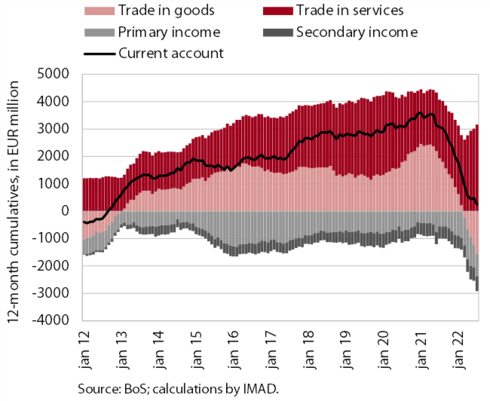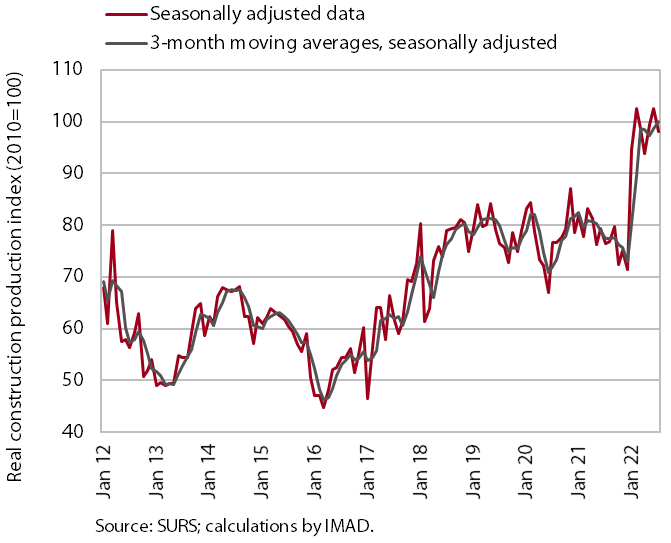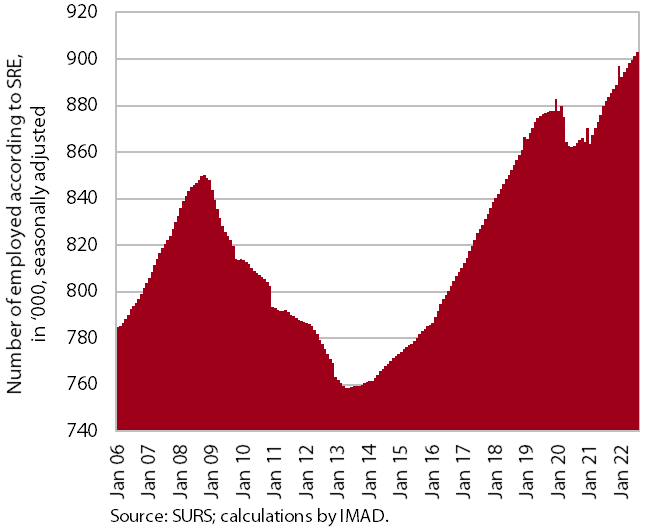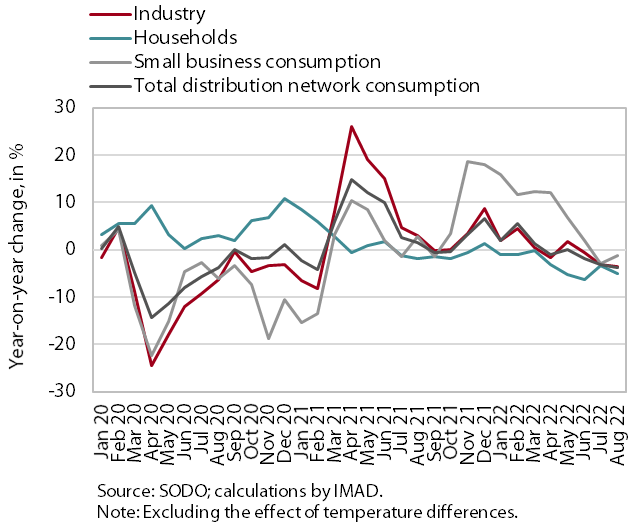Charts of the Week
Current economic trends from 12 to 16 September 2022: current account of the balance of payments, activity in construction, number of persons in employment and electricity consumption
The current account of the balance of payments showed a deficit in the first seven months. According to data on the value of construction work put in place, construction activity remained at a high level in July. Year-on-year increase in the number of persons in employment has gradually slowed since the beginning of the year, except in construction and, to a lesser extent, in accommodation and food service activities, which also face the largest labour shortage; employment of foreigners is increasingly contributing to overall growth. In August, electricity consumption in all consumption groups was lower year-on-year, most likely due to higher electricity prices, supply chain problems and labour shortages.
Current account of the balance of payments, July 2022

The current account surplus in the last 12 months was significantly lower year-on-year (EUR 243.3 million compared to EUR 3.1 billion) and a deficit of EUR 283 million was recorded in the first seven months. With imports growing faster than exports, lower surplus was mainly due to goods trade balance, which turned from a surplus to a deficit at the end of last year. Net outflows of primary and secondary income were also higher year-on-year. The primary income deficit was higher mainly because more customs duties were paid to the EU budget this year due to the import of electric vehicles for the entire EU market (Luka Koper). In addition, subsidies received from the EU budget were also lower. The higher secondary income deficit was due to higher private sector transfers abroad and higher pension payments to pensioners abroad. The services surplus is increasing in all segments of trade in services, especially in travel (lifting of COVID-19 restrictions).
Activity in construction, July 2022

According to figures on the value of construction work put in place, construction activity remained high in July. After a strong upturn in construction activity at the beginning of this year, the value of construction work remained at a high level during the rest of the year and was 28.5% higher in July than in the same month of 2021. Compared to previous years, construction of buildings stands out in terms of activity. Activity was also high in civil engineering, while it was lower in specialised construction work (installation works, building completion).
Some other data suggest a significantly lower construction activity. According to the data on VAT, the activity of construction companies in July was 1.5% lower than in July last year. Based on data on the value of construction put in place, the difference in the growth of activity was 30 p.p. According to the national accounts figures for the second quarter of this year (latest available data), the growth in value added was 7.7% year-on-year, which is 17 p.p. less than according to the data on the value of construction work put in place.
Number of persons in employment, July 2022

The number of persons in employment was record high in July; growth was 2.4% year-on-year and has gradually slowed since the beginning of the year. Growth remained high in construction and, to a lesser extent, in accommodation and food service activities, which are also activities facing greatest shortage of labour. Employment of foreign workers has recently been contributing more and more to overall employment growth, already 71% in July. Consequently, the share of foreign nationals among all persons in employment is also increasing, up 1.4 p.p. to 13.6% over the last year. Activities with the largest share of foreign workers are construction (47%), transportation and storage (32%) and administrative and support service activities (25%).
Electricity consumption by consumption group, August 2022

Similar to July, electricity consumption in the distribution network in August was lower year-on-year in all consumption groups. Industrial consumption was 3.6% lower year-on-year in August, most likely due to adjustments in energy-intensive companies as a result of high electricity prices. We believe that the high prices have also affected household consumption, which was 5.1% lower in August than a year ago. Small business consumption was also lower year-on-year in August (by 1.3%), which, in addition to high electricity prices, could also be due to problems of labour shortages, which led to a reduction in working hours in some businesses and service activities.
